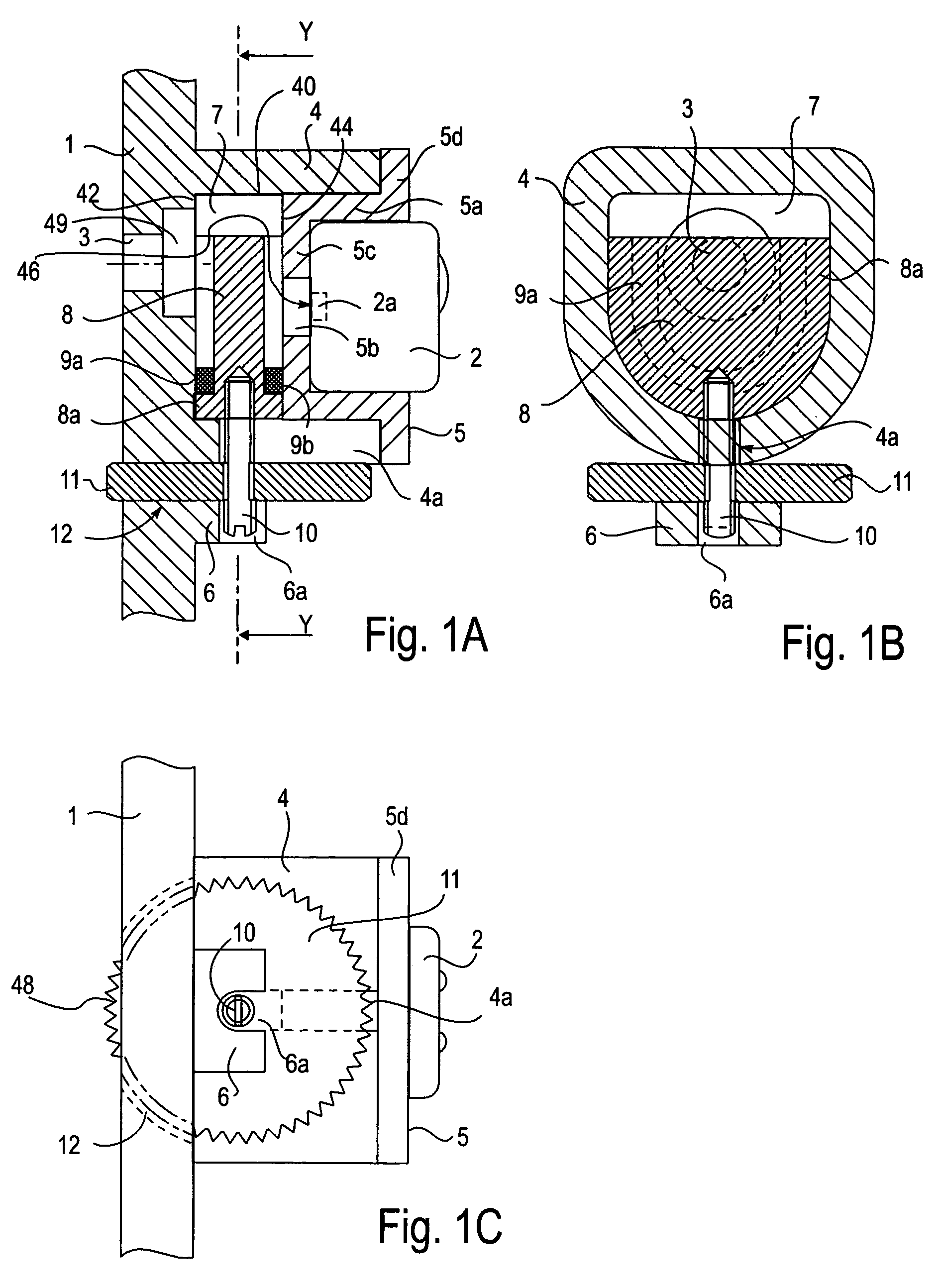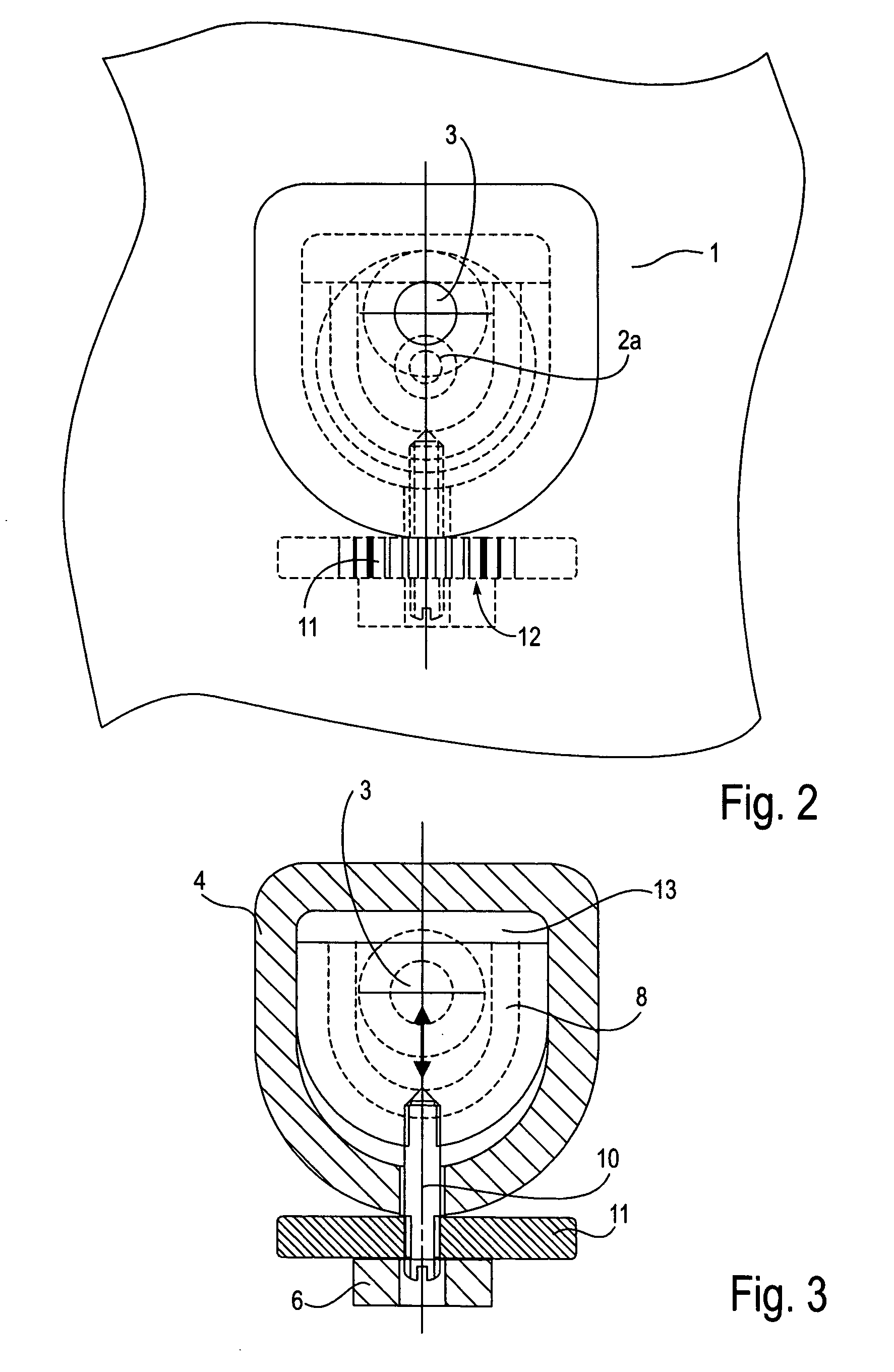Microphone apparatus
a microphone and microphone technology, applied in the field of microphone equipment, can solve the problems of univocal louver formation, difficulty for the receiver side to hear the transmitting sound, and (1) inability to solv
- Summary
- Abstract
- Description
- Claims
- Application Information
AI Technical Summary
Benefits of technology
Problems solved by technology
Method used
Image
Examples
first embodiment
[0037]First, FIG. 1 is a structure diagram illustrating a state in which a microphone is attached to a panel of a microphone case of a mobile-use radio apparatus, (A) is a cross-sectional view, (B) is a perspective cross-sectional view taken substantially along line Y—Y of (A), and (C) is a bottom view.
[0038]In each view, reference numeral 1 denotes a panel, and reference numeral 2 denotes a microphone. A sound absorbing hole 3 is formed on the panel and a tubular portion 4 with substantially a D-shaped cross section is integrally formed at a back surface side of the sound absorbing forming region. The microphone 2 is attached to the tubular portion 4 on the panel 1 through an adapter 5.
[0039]A slot 4a with a fixed width is formed from a rear end side at a lower side wall portion of the tubular portion 4 of the panel 1.
[0040]A support plate 6 is integrally provided at the lower side of the tubular portion 4 of the panel 1 to have a given distance. The support plate 6 is installed in...
second embodiment
[0054]As in the case of the first embodiment, this embodiment will explain, as an example, the microphone apparatus that relates to the microphone case of the radio apparatus.
[0055]In FIG. 4, (A) is a cross-sectional view of the microphone, (B) is a perspective cross-sectional view taken substantially along line Y1—Y1 of (A), (C) is a perspective cross-sectional view taken substantially along line Y2—Y2 of (A), and (D) is a bottom view.
[0056]In each view, reference numeral 21 denotes a panel, 22: a microphone, 23: a sound absorbing hole, 24: a tubular portion, which is integral with the panel 21, and 25: an adapter for attaching the microphone 22 to the tubular portion.
[0057]Here, the tubular portion 24 is formed at the back surface side 52 of the area where the sound absorbing hole 23 is formed in the panel 21. The basic structure, in which the microphone 22 is attached to the tubular portion 24 through the adapter 25, is the same as the first embodiment. The adapter includes an ap...
PUM
 Login to View More
Login to View More Abstract
Description
Claims
Application Information
 Login to View More
Login to View More - R&D
- Intellectual Property
- Life Sciences
- Materials
- Tech Scout
- Unparalleled Data Quality
- Higher Quality Content
- 60% Fewer Hallucinations
Browse by: Latest US Patents, China's latest patents, Technical Efficacy Thesaurus, Application Domain, Technology Topic, Popular Technical Reports.
© 2025 PatSnap. All rights reserved.Legal|Privacy policy|Modern Slavery Act Transparency Statement|Sitemap|About US| Contact US: help@patsnap.com



